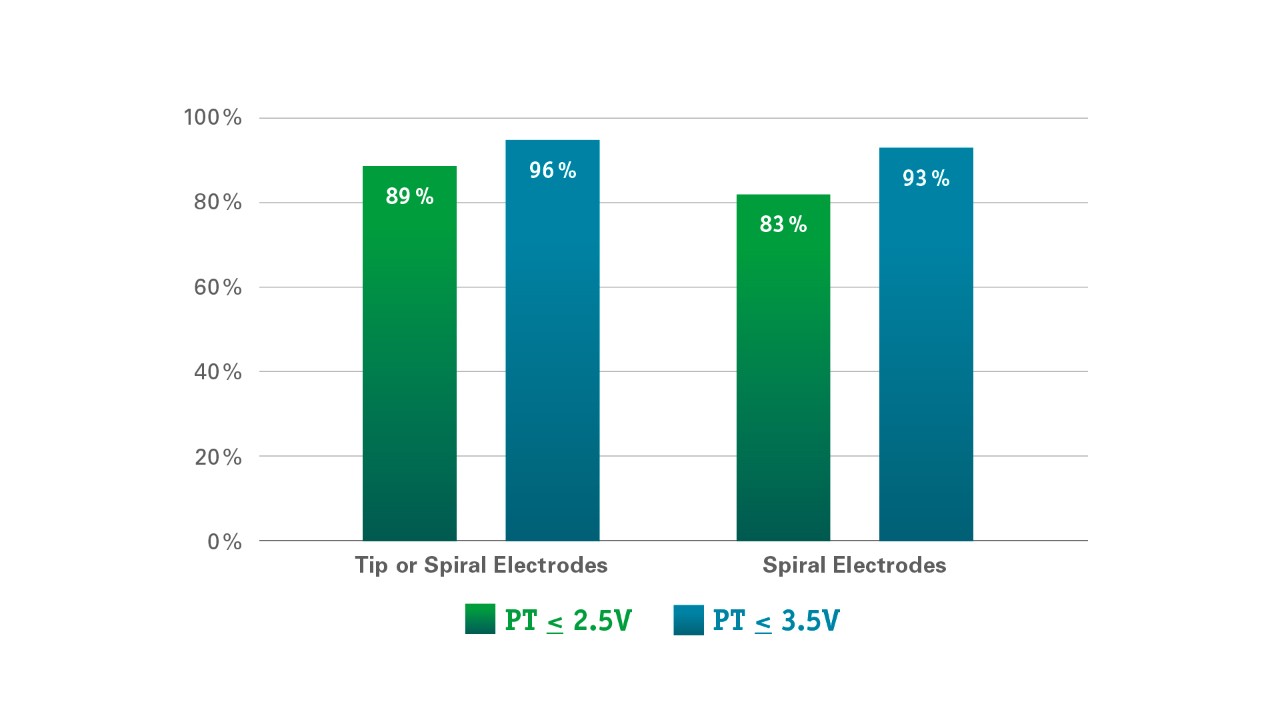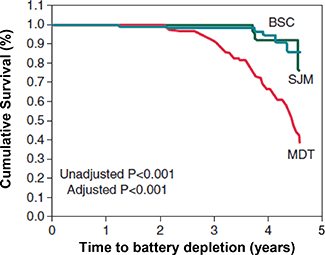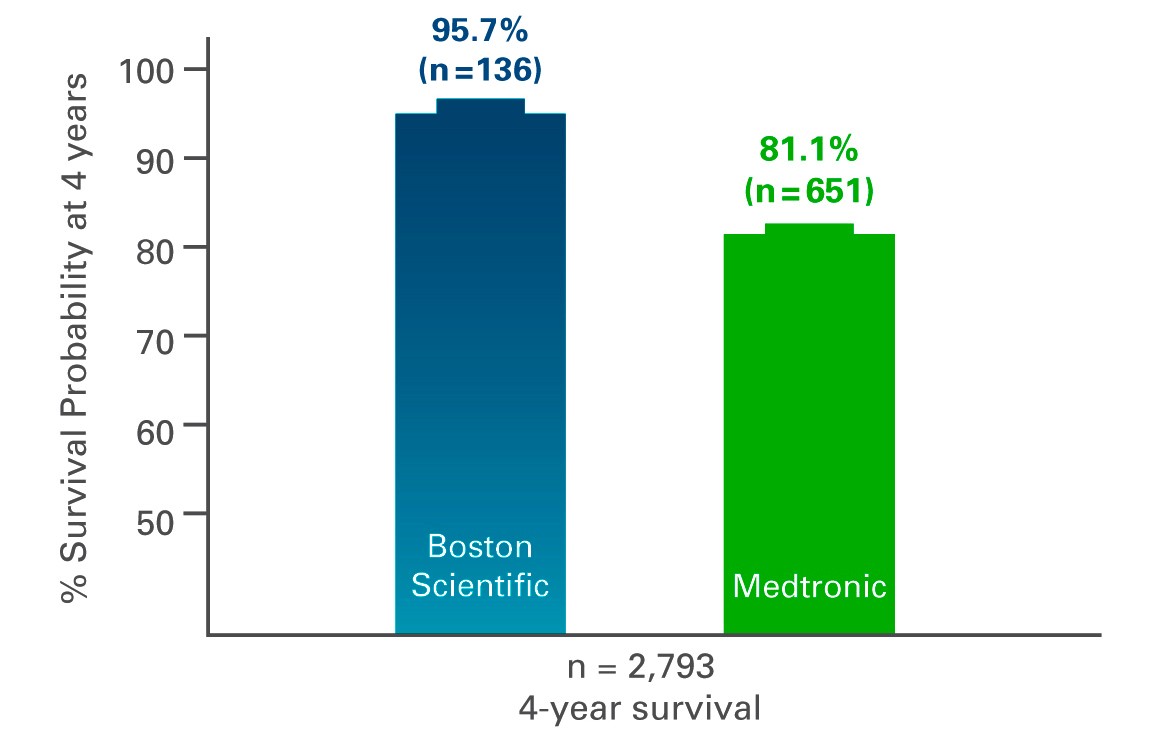X4 CRT-D System
X4 CRT-D and ACUITYᵀᴹ X4 Quadripolar Pacing Leads
Studies on CRT-D Longevity
2013 Independent Study
Medtronic = 416 patients, Boston Scientific = 173 patients, St. Jude = 57 patients
Learn more on The SABA Study
2014 Independent Study
At Heart Rhythm Society’s 2014 Annual meeting, a second independent study (Johansen, et. al.) that included CRT-Ds with contemporary battery technology was released.5
This study confirmed the results of Dr. Saba’s study – Boston Scientific CRT-Ds lasting significantly longer than Medtronic CRT-Ds.
Medtronic = 651 patients, Boston Scientific = 136 patients, St. Jude = 1,587 patients, Biotronik = 369
Learn more on The JOHANSEN Study














